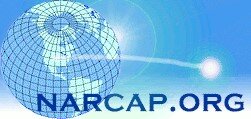The Definition of Unidentified Aerial Phenomena or UAP
By Ted Roe
Executive Director
NARCAP.org
This is the definition of “Unidentified Aerial Phenomena , or UAP” as offered by a NARCAP founding member and former NARCAP Science Chief Dr. Richard Haines in 1980 and applied by NARCAP.org since 1999:
““An Unidentified Aerial Phenomena, UAP, is the visual stimulus that provokes a sighting report of an object or light seen in the sky, the appearance and/or flight dynamics of which do not suggest a logical, conventional flying object and which remains unidentified after close scrutiny of all available evidence by persons who are technically capable of making both a technical identification as well as a common sense identification, if one is possible.” (Haines, PP 13-22, 1980)”
When NARCAP was founded in 1999 we adopted the term “unidentified aerial phenomena or UAP” because we felt that it was a far more accurate term for the many profiles of unidentified aerial phenomena, some of which were described as lights rather than objects, and had not been co-opted by the “UFO community” as a term for “alien space ships” in the way the term “UFO” has been. Many of our international partners had already adopted the term in some form or variation. A simple review of the internet archives will show that at the time NARCAP was founded the term “UAP” was not in use. Once NARCAP began publishing papers and promoting “UAP” as an objective term the UFO community in general picked it up and the term “UAP” has been in use ever since. Recently, the United States Navy adopted the term.
Over the years since we have encountered some steady misunderstandings regarding the terms “Unidentified Aerial Phenomena” or UAP and “Unidentified Flying Object” or UFO. One of the most common misunderstandings is that either term is in reference to something that could not be identified therefore it could be anything. This is exactly not correct. Both terms are intended to convey that in cases where there is enough information that an identification can be made by those most qualified to do so and yet an identification can not be made the phenomenon responsible can be considered “unidentified”. It is the best documented cases of unidentified aerial phenomena that remain in the dataset if one adheres to this definition and scores cases correctly.
So when correctly applying the term “UAP” one is saying that the incident/phenomenon in question has been documented very well and that data was subjected to the most qualified technical scrutiny and that the conclusion of that analysis is that the incident/phenomenon can not be identified. When NARCAP uses these terms in a published report that is exactly the meaning and application of the terms “UAP” and “UFO” .
